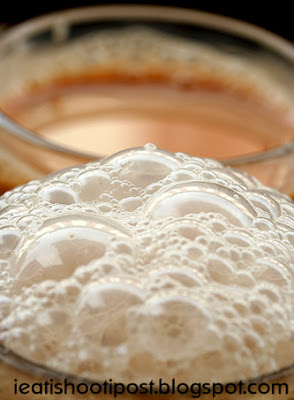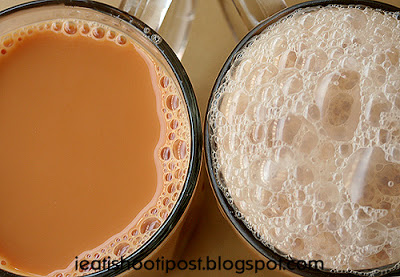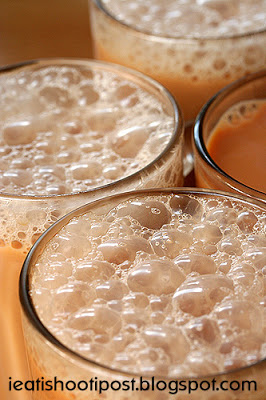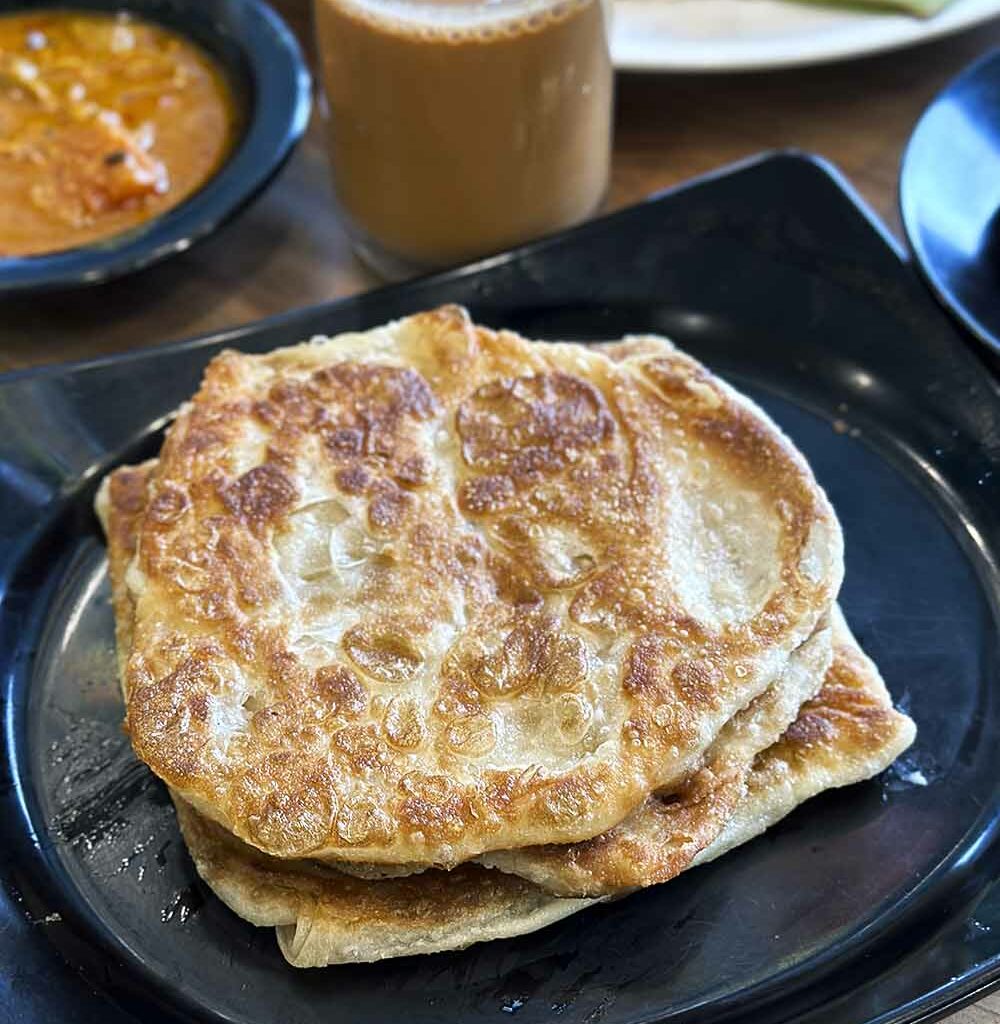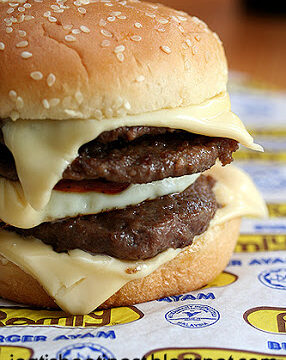Remember in my last Teh Tarik post I asked whether “Tariking” the Teh actually made a difference to the taste of the Teh? Well, I decided to put the question to the test. So in true quasi-scientific fashion, I put the question through a totally unrigorous randomised uncontrolled trial. The type of trial that can never be published in any respectable journal.
Here then is the experiment:
The Hypothesis:
“Tariking” the Teh actually affects the taste of the Teh, making it more delectable to the palate.
The Subjects:
Camemberu, Liverpool, Tag, iwatch_ueat and ieat. Two females and three males who are totally unbiased, unsuspecting and most importantly, have nothing to gain from lying about whether Tarik or No Tarik is better. Except maybe for Liverpool who as you know owns a cafe and he does only Teh C but no Tarik. He has promised to be totally unbiased….. yeah right.
The Design:
 Two cups of tea are prepared using a common container so that the amount of condensed milk, tea and water are the same. One cup is then decanted into a mug without “Tariking”. The other one undergoes three Tariks at a distance of a man’s arm. The tea is than decanted into another absolutely identical mug.
Two cups of tea are prepared using a common container so that the amount of condensed milk, tea and water are the same. One cup is then decanted into a mug without “Tariking”. The other one undergoes three Tariks at a distance of a man’s arm. The tea is than decanted into another absolutely identical mug.
The subjects where first asked to taste both teas with their eyes opened. Next, the subjects were blindfolded (ok we just asked them to closed their eyes and hope they don’t cheat) and asked to taste test the 2 cups of tea and then to tell the rest if they perceive a difference in the taste. A bottle of mineral water was provided to cleanse the palate in between tastings.
The Results:
Tag was given 2 sips of the Non-Tariked Tea. He claimed that the first one tasted better then the 2nd.
iwatch_ueat was given the Tariked one first and the Non-Tariked one 2nd. She claimed the first was the Non-Tariked and the 2nd one the Tariked
Camemberu was similarly given the Tariked one first and non-Tariked one next. She got it right the first time, but could not repeat her feat the second time.
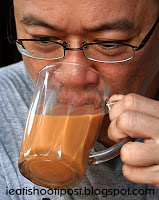 Liverpool was given 2 sips from the Non-Tariked tea. He said the first was Tariked and the 2nd the non-Tariked.
Liverpool was given 2 sips from the Non-Tariked tea. He said the first was Tariked and the 2nd the non-Tariked.
I was honest enough to just say I could not tell the difference.
The Trial Conclusion:
There is no doubt that we have proven the hypothesis to be false.
“Tariking” the tea may lower the temperature a bit and make lots of foam and maybe trap a few flying insects and dust particles in the process, but it does not significantly alter the taste of the Teh such that ordinary makankakis can discern the difference.
Back to the Teh Tarik itself.
This non-descript “Hole in the Wall” little stall in Kampung Glam is a favourite amongst Taxi Drivers because of the convenient parking and the cheap prices. A cup of Teh Tarik here is still only 70 cents. I was told that it was only 60 cents before, so they might have increased the price recently due to the shortage of milk.
It was a good cup of tea. The tea was strong but we felt that it was not creamy enough that day. And, unless you specially ask for lots of foam, the Teh actually only goes through a “half arm” tarik once. Then again, apart from making more foam, it does not actually affect the taste that much as we have shown in our experiment. 4/5
Conclusion
Good and cheap cup of Teh Tarik. The ambiance of this unassumingly quaint little un-named shop, manned by 2 elderly men with distinguished beards really adds to the whole Teh Tarik experience.



